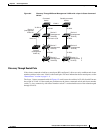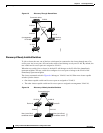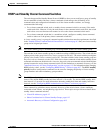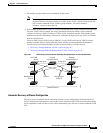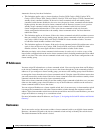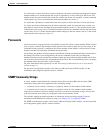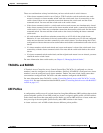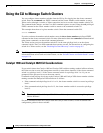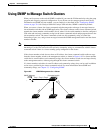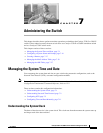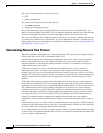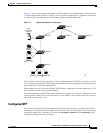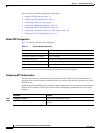
6-17
Catalyst 3750-E and 3560-E Switch Software Configuration Guide
OL-9775-02
Chapter 6 Clustering Switches
Planning a Switch Cluster
These are considerations to keep in mind when you have switch stacks in switch clusters:
• If the cluster command switch is not a Catalyst 3750-E switch or switch stack and a new stack
master is elected in a cluster member switch stack, the switch stack loses its connectivity to the
switch cluster if there are no redundant connections between the switch stack and the cluster
command switch. You must add the switch stack to the switch cluster.
• If the cluster command switch is a switch stack and new stack masters are simultaneously elected
in the cluster command switch stack and in cluster member switch stacks, connectivity between the
switch stacks is lost if there are no redundant connections between the switch stack and the cluster
command switch. You must add the switch stacks to the cluster, including the cluster command
switch stack.
• All stack members should have redundant connectivity to all VLANs in the switch cluster.
Otherwise, if a new stack master is elected, stack members connected to any VLANs not configured
on the new stack master lose their connectivity to the switch cluster. You must change the VLAN
configuration of the stack master or the stack members and add the stack members back to the switch
cluster.
• If a cluster member switch stack reloads and a new stack master is elected, the switch stack loses
connectivity with the cluster command switch. You must add the switch stack back to the switch
cluster.
• If a cluster command switch stack reloads, and the original stack master is not re-elected, you must
rebuild the entire switch cluster.
For more information about switch stacks, see Chapter 5, “Managing Switch Stacks,”
TACACS+ and RADIUS
If Terminal Access Controller Access Control System Plus (TACACS+) is configured on a cluster
member, it must be configured on all cluster members. Similarly, if RADIUS is configured on a cluster
member, it must be configured on all cluster members. Further, the same switch cluster cannot have
some members configured with TACACS+ and other members configured with RADIUS.
For more information about TACACS+, see the “Controlling Switch Access with TACACS+” section
on page 9-10. For more information about RADIUS, see the “Controlling Switch Access with RADIUS”
section on page 9-17.
LRE Profiles
A configuration conflict occurs if a switch cluster has Long-Reach Ethernet (LRE) switches that use both
private and public profiles. If one LRE switch in a cluster is assigned a public profile, all LRE switches
in that cluster must have that same public profile. Before you add an LRE switch to a cluster, make sure
that you assign it the same public profile used by other LRE switches in the cluster.
A cluster can have a mix of LRE switches that use different private profiles.



